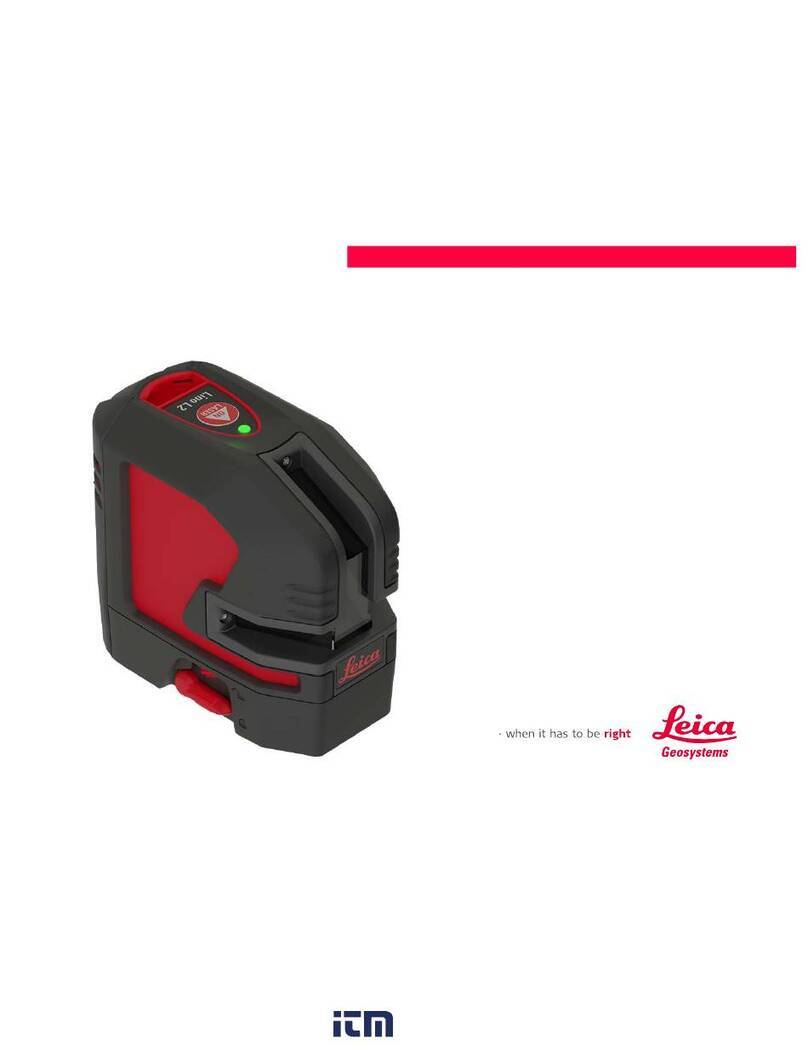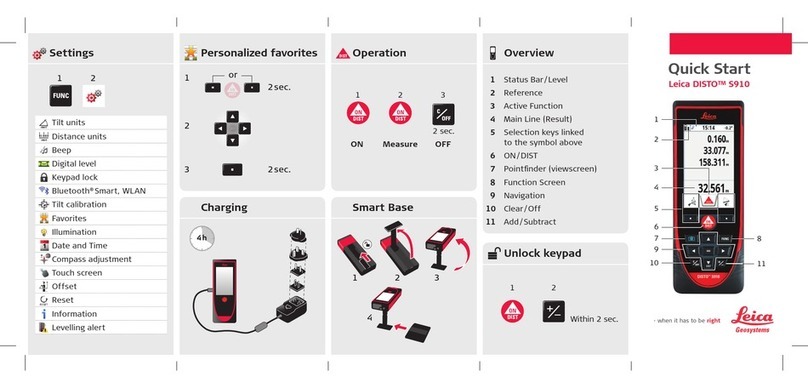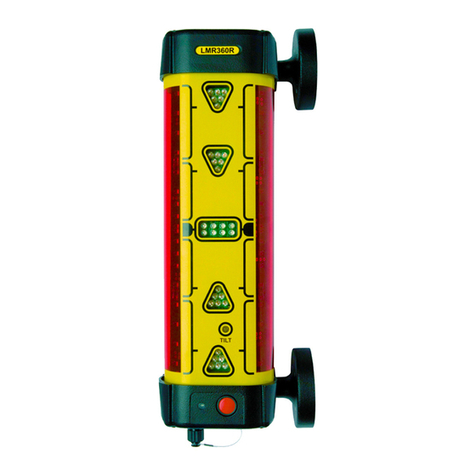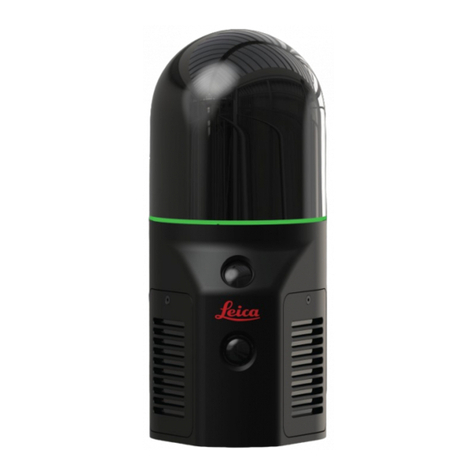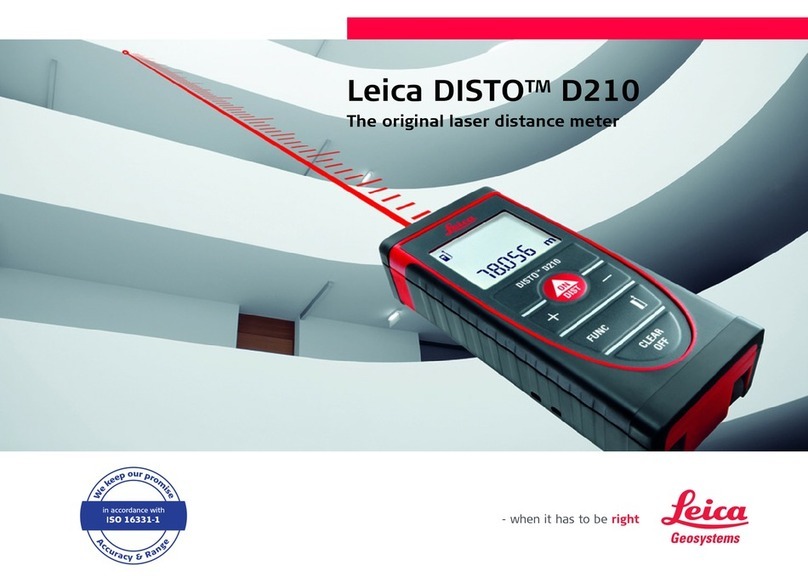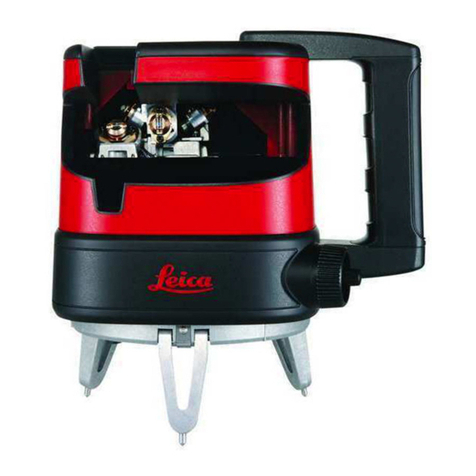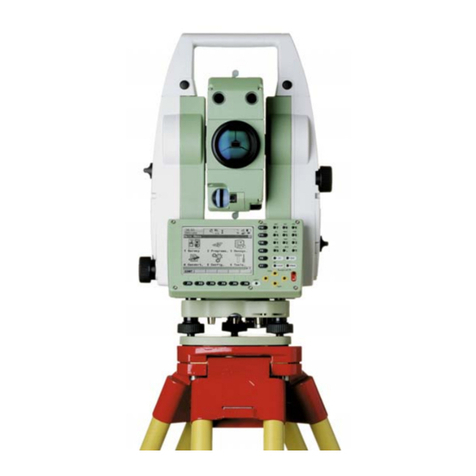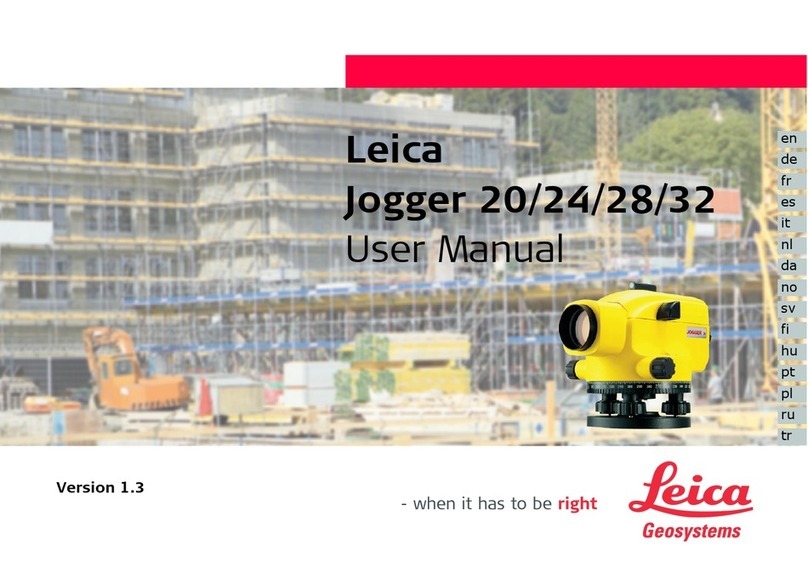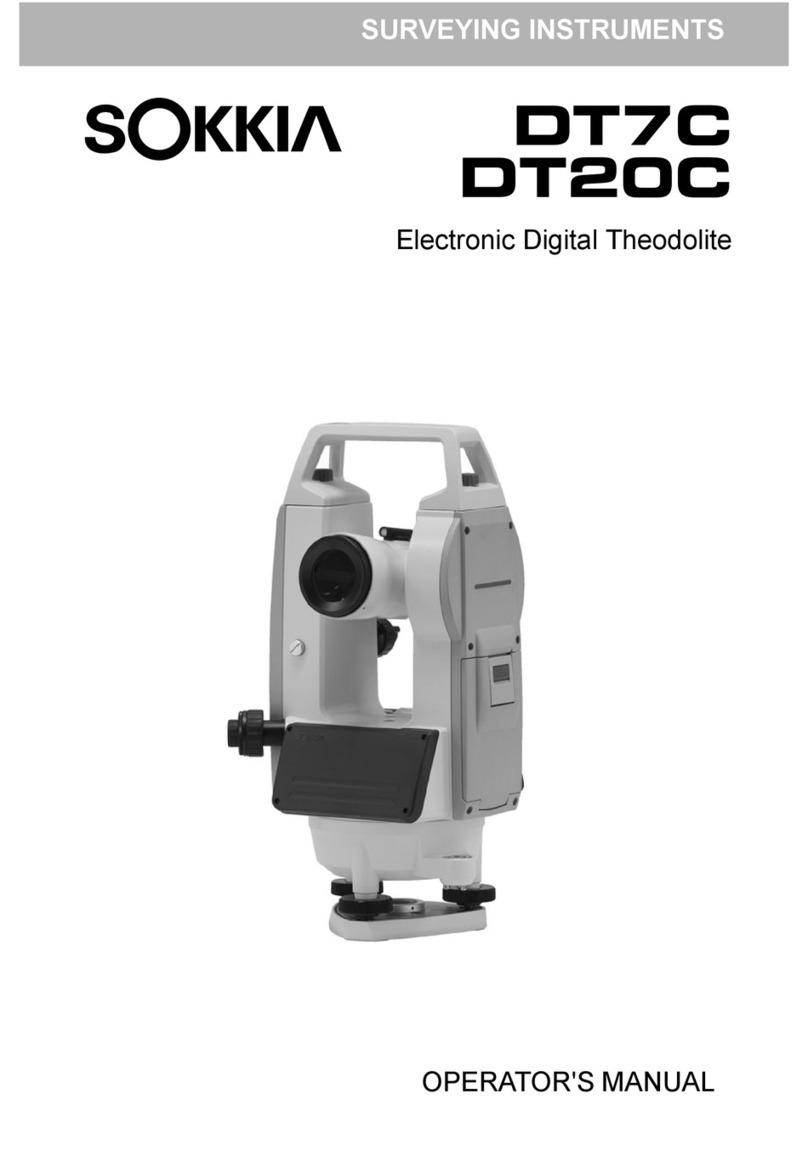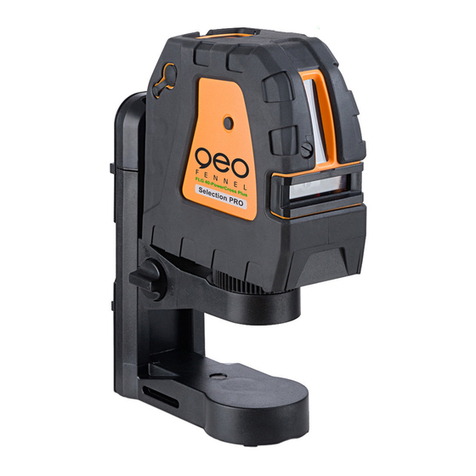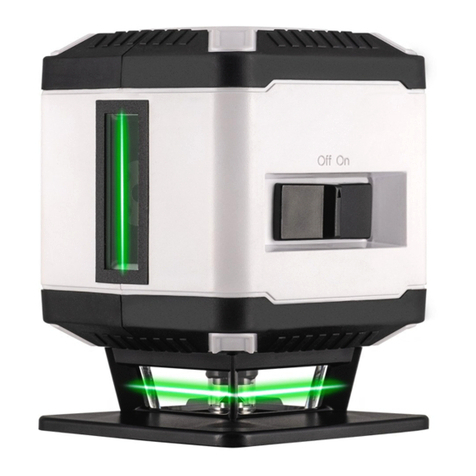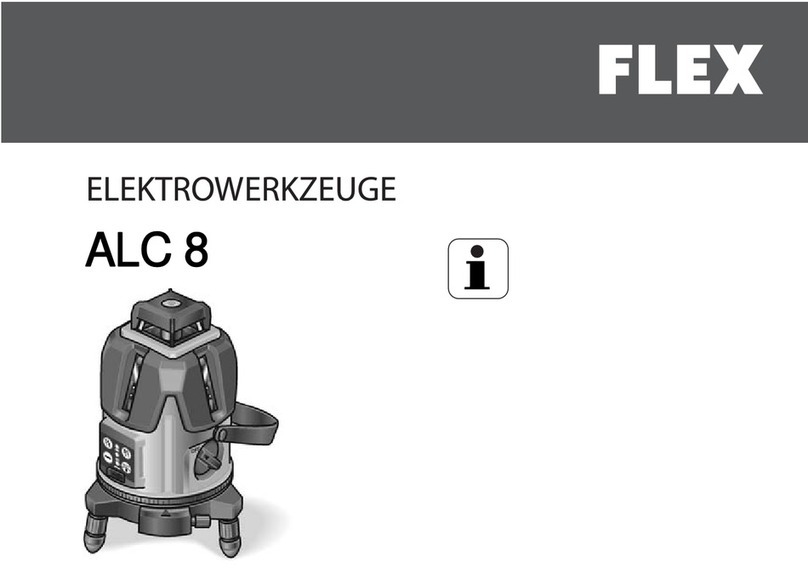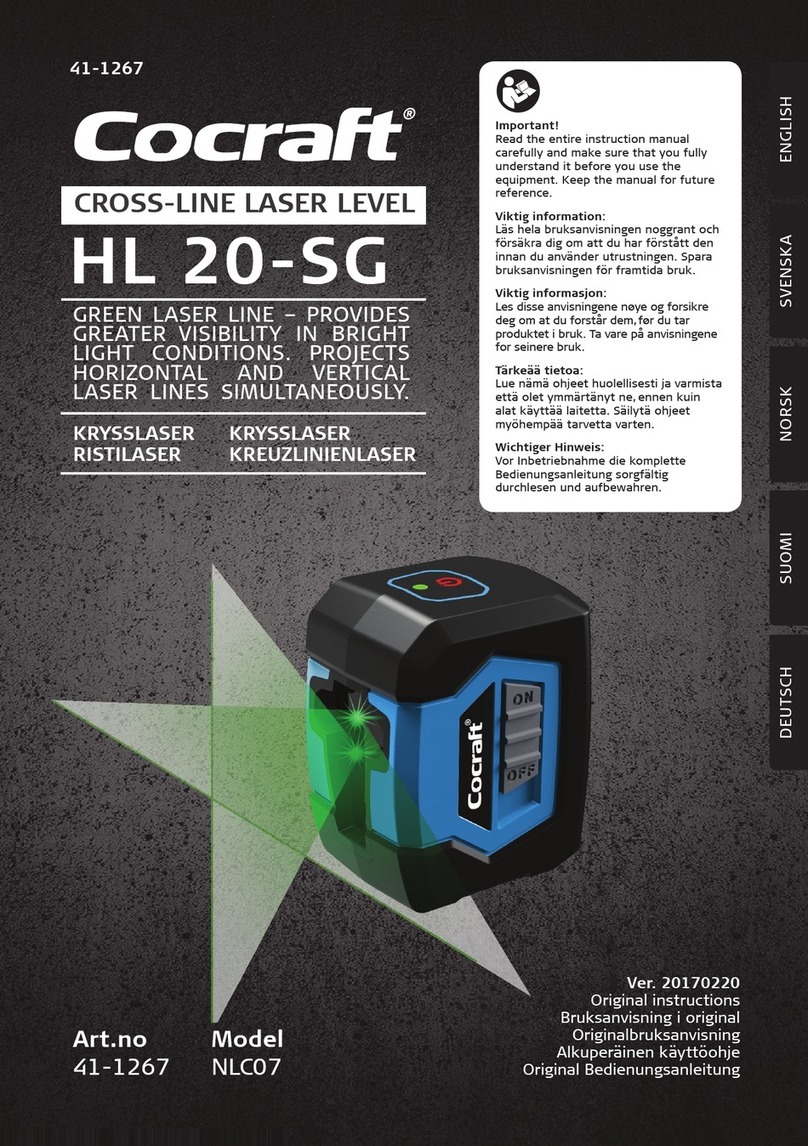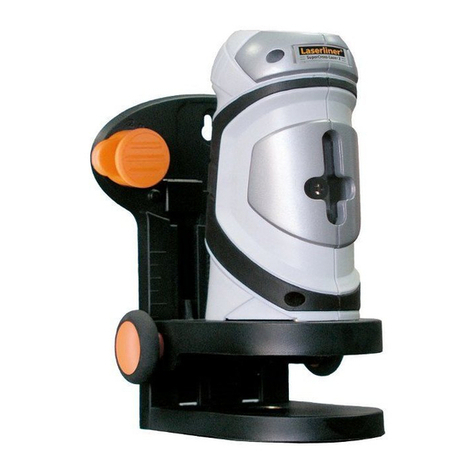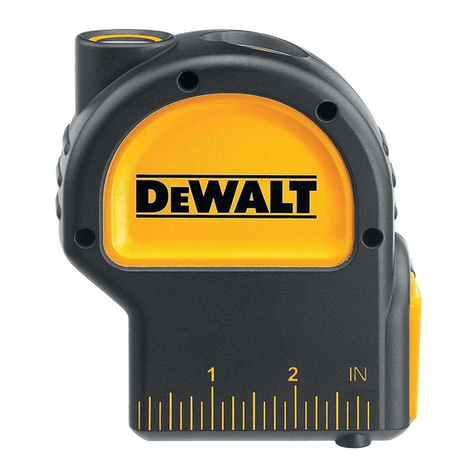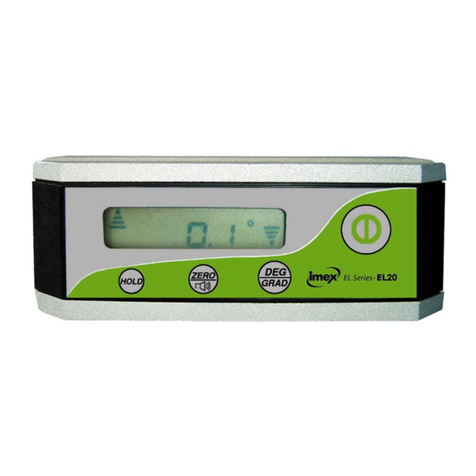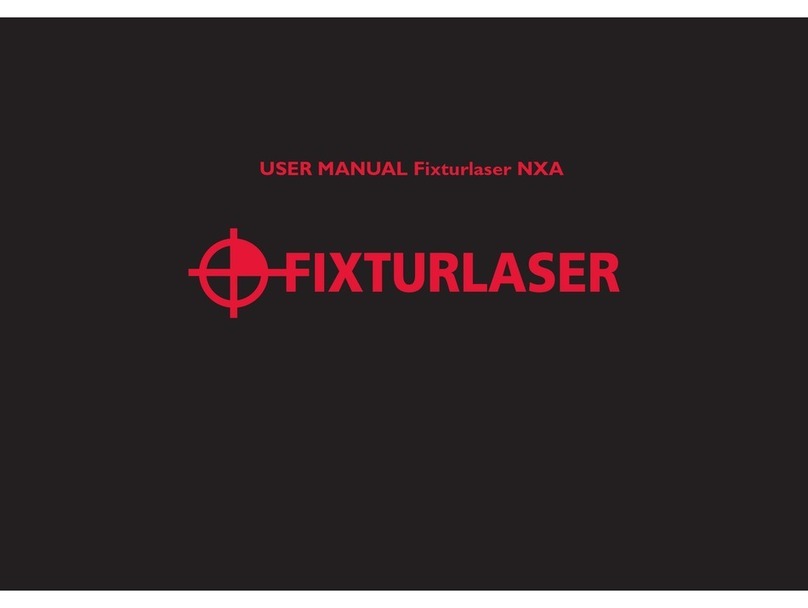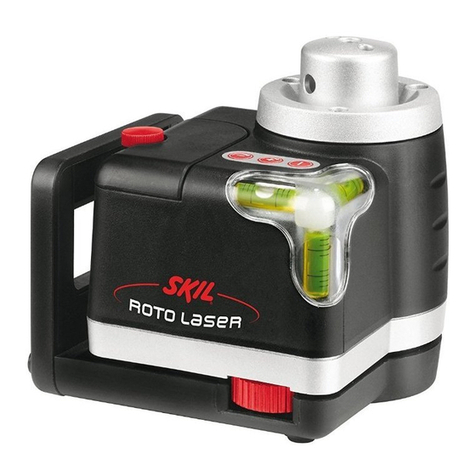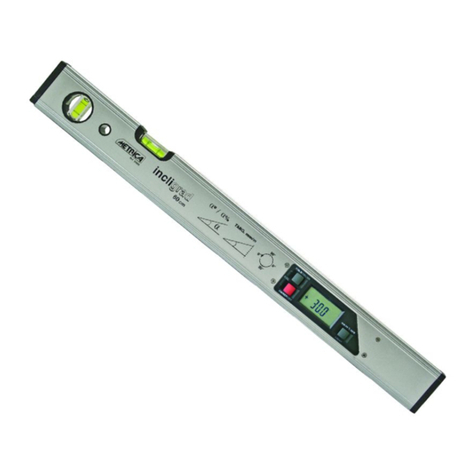
TS12 Lite, Safety Directions 8
1.5 Hazards of Use
CAUTION Watch out for erroneous measurement results if the product has been dropped or has
been misused, modified, stored for long periods or transported.
Precautions:
Periodically carry out test measurements and perform the field adjustments indicated
in the user manual, particularly after the product has been subjected to abnormal use
and before and after important measurements.
DANGER Because of the risk of electrocution, it is dangerous to use poles and extensions in the
vicinity of electrical installations such as power cables or electrical railways.
Precautions:
Keep at a safe distance from electrical installations. If it is essential to work in this
environment, first contact the safety authorities responsible for the electrical instal-
lations and follow their instructions.
NOTICE With the remote control of products, it is possible that extraneous targets will be
picked out and measured.
Precautions:
When measuring in remote control mode, always check your results for plausibility.
WARNING If the product is used with accessories, for example masts, staffs, poles, you may
increase the risk of being struck by lightning.
Precautions:
Do not use the product in a thunderstorm.
WARNING During dynamic applications, for example stakeout procedures there is a danger of
accidents occurring if the user does not pay attention to the environmental conditions
around, for example obstacles, excavations or traffic.
Precautions:
The person responsible for the product must make all users fully aware of the existing
dangers.
WARNING Inadequate securing of the working site can lead to dangerous situations, for example
in traffic, on building sites, and at industrial installations.
Precautions:
Always ensure that the working site is adequately secured. Adhere to the regulations
governing safety and accident prevention and road traffic.
CAUTION Be careful when pointing the product towards the sun, because the telescope functions as a
magnifying glass and can injure your eyes and/or cause damage inside the product.
Precautions:
Do not point the product directly at the sun.
CAUTION If the accessories used with the product are not properly secured and the product is subjected
to mechanical shock, for example blows or falling, the product may be damaged or people can
sustain injury.
Precautions:
When setting-up the product, make sure that the accessories are correctly adapted, fitted,
secured, and locked in position.
Avoid subjecting the product to mechanical stress.
